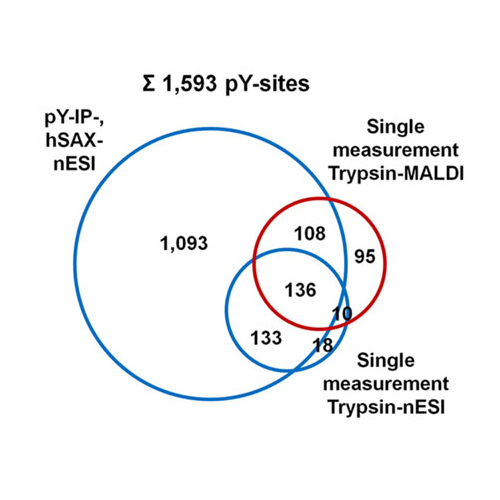MALDI-TOF and nESI Orbitrap MS/MS identify orthogonal parts of the phosphoproteome
02-May-2016
Proteomics, Volume 16, Issue 10, Pages 1447–1456, DOI 10.1002/pmic.201500523
Proteomics, online article
Phosphorylation is a reversible posttranslational protein modification which plays a pivotal role in intracellular signaling. Despite extensive efforts, phosphorylation site mapping of proteomes is still incomplete motivating the exploration of alternative methods that complement existing workflows. In this study, we compared tandem mass spectrometry (MS/MS) on matrix assisted laser desorption/ionization time-of-flight (MALDI-TOF) and nano-electrospray ionization (nESI) Orbitrap instruments with respect to their ability to identify phosphopeptides from complex proteome digests. Phosphopeptides were enriched from tryptic digests of cell lines using Fe-IMAC column chromatography and subjected to LC-MS/MS analysis. We found that the two analytical workflows exhibited considerable orthogonality. For instance, MALDI-TOF MS/MS favored the identification of phosphopeptides encompassing clear motif signatures for acidic residue directed kinases. The extent of orthogonality of the two LC-MS/MS systems was comparable to that of using alternative proteases such as Asp-N, Arg-C, chymotrypsin, Glu-C and Lys-C on just one LC-MS/MS instrument. Notably, MALDI-TOF MS/MS identified an unexpectedly high number and percentage of phosphotyrosine sites (∼20% of all sites), possibly as a direct consequence of more efficient ionization. The data clearly show that LC-MALDI MS/MS can be a useful complement to LC-nESI MS/MS for phosphoproteome mapping and particularly so for acidic and phosphotyrosine containing peptides.











